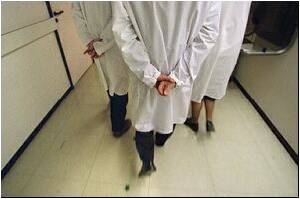
The device relies on optical coherence tomography (OCT), a visualization technology that is similar to ultrasound imaging, but uses light instead of sound to produce the images. The team will present their findings at the Optical Society’s (OSA) Annual Meeting, Frontiers in Optics (FiO) 2012, taking place Oct. 14 - 18 in Rochester, N.Y.
To monitor chronic conditions such as ear infections, primary care physicians currently rely on instruments that are essentially magnifying glasses, says UIUC physician and biomedical engineer Stephen Boppart, who will present the team’s findings at FiO. The new handheld imaging device would give doctors a way to quantitatively monitor these conditions, and possibly make more efficient and accurate referrals to specialists.
The scanners include three basic components: a near-infrared light source and OCT system, a video camera to relay real-time images of surface features and scan locations, and a microelectromechanical (MEMS)-based scanner to direct the light. Near-infrared wavelengths of light penetrate deeper into human tissues than other wavelengths more readily absorbed by the body. By measuring the time it takes the light to bounce back from tissue microstructure, computer algorithms build a picture of the structure of tissue under examination.
Diabetic patients in particular may benefit from the device. About 40 to 45 percent of diabetics develop leaky blood vessels in their retinas – a condition called retinopathy, which can lead to thickening of the retina, blurry vision, and eventually blindness. The handheld OCT device would allow doctors to monitor the health of the retina, potentially catching retinopathy in its early stages. In some cases, changes in the eye could help doctors diagnose diabetes, Boppart says.
Boppart and his team are hopeful that falling production costs combined with smaller, more compact designs will enable more physicians to take advantage of the scanners, and become a common point-of-care tool. Eventually, they would like to see the imagers at work in developing countries as well. He and an international team of collaborators recently received a $5 million National Institutes of Health Bioengineering Research Partnership grant to further refine the device.
Advertisement








